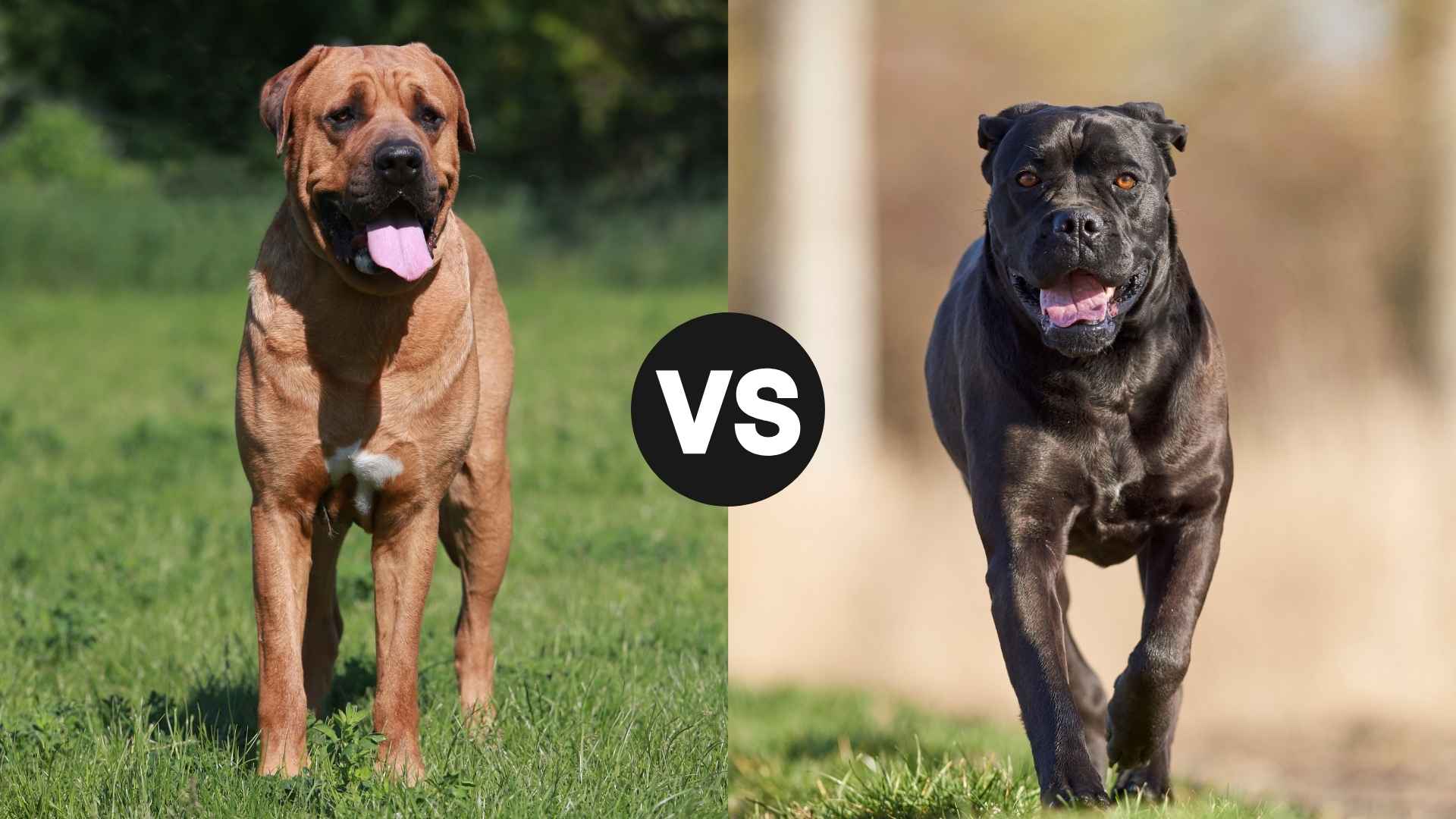When it comes to choosing a dog that can offer both protection and companionship, few breeds stand out quite like the Tosa Inu and Cane Corso dogs. These muscular powerhouses are not for the faint of heart—they’re bold, confident, and built to guard.
But beyond their imposing frames lies a world of difference in temperament, training needs, and overall compatibility with family life.
The Tosa Inu or Tosa Ken, a Japanese fighting breed, is quiet, composed, and fiercely loyal. On the other hand, the Italian Cane Corso breed is all about versatility—family protector, loyal friend, and sharp-witted worker all rolled into one.
Both require experienced owners who understand the responsibility that comes with handling such strong-willed breeds. This isn’t just a tale of brute strength—it’s a deep dive into personality, lifestyle fit, and long-term commitment.
Whether you’re looking for a silent sentinel or a vigilant companion, we will help you decide whether the Tosa Inu or Cane Corso is your ideal canine match!
Tosa Inu vs. Cane Corso
Size and Weight Differences
If these two were entering a heavyweight championship, both would easily qualify—but let’s break down their physical stats:
Tosa Inu
The Tosa Inu, also called the Japanese Mastiff, hails from the Land of the Rising Sun. Bred in the 19th century as a dog-fighting champion (yes, think sumo wrestler but with fur), this large breed was Japan’s answer to blending native fighting dogs with the muscle of Western breeds like the Mastiff and Great Dane. The result? A samurai-like canine with power, discipline, and a calm demeanor.
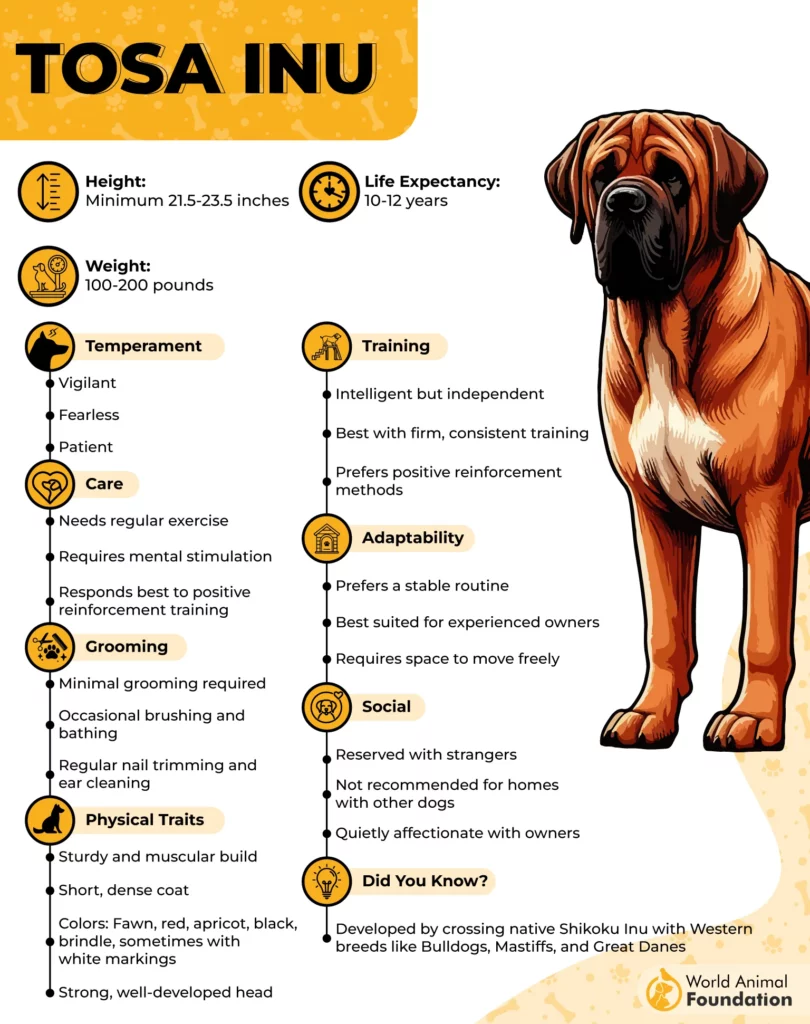
Height: 21.5 to 23.5 inches (some can be taller!)
Weight: 100 to 200 pounds (yep, that’s not a typo
Built like a bodyguard who moonlights as a sumo champion.
Cane Corso
On the other hand, the Cane Corso (pronounced KAH-nay KOR-so) is an Italian treasure. Descended from Roman war dogs, the Corso once fought beside legionaries and later helped with farm work and guarding estates.
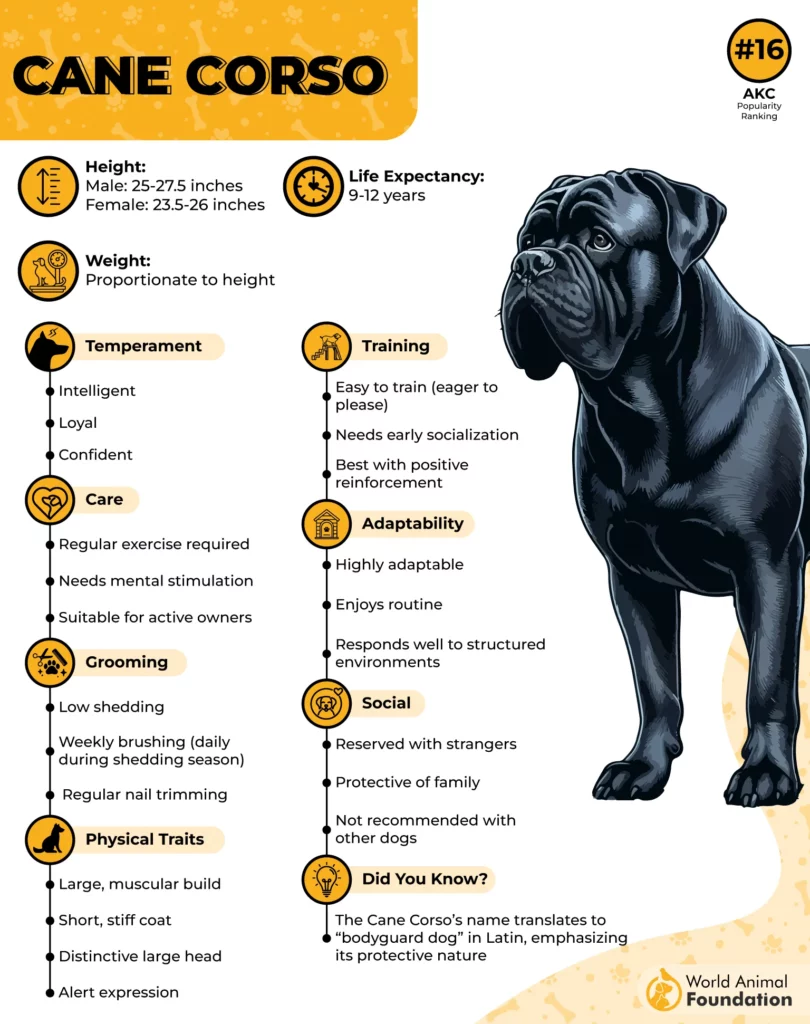
PetMD noted that the Cane Corso dog is a working breed with a rich history. Traditionally, Corsi were used as watchdogs, farm workers, and even military dogs. Their lineage traces back to ancient Greece and Rome, though they didn’t gain popularity in the United States until the 1980s. Picture a gladiator who retired to tend sheep and protect the villa—respectable and swole.
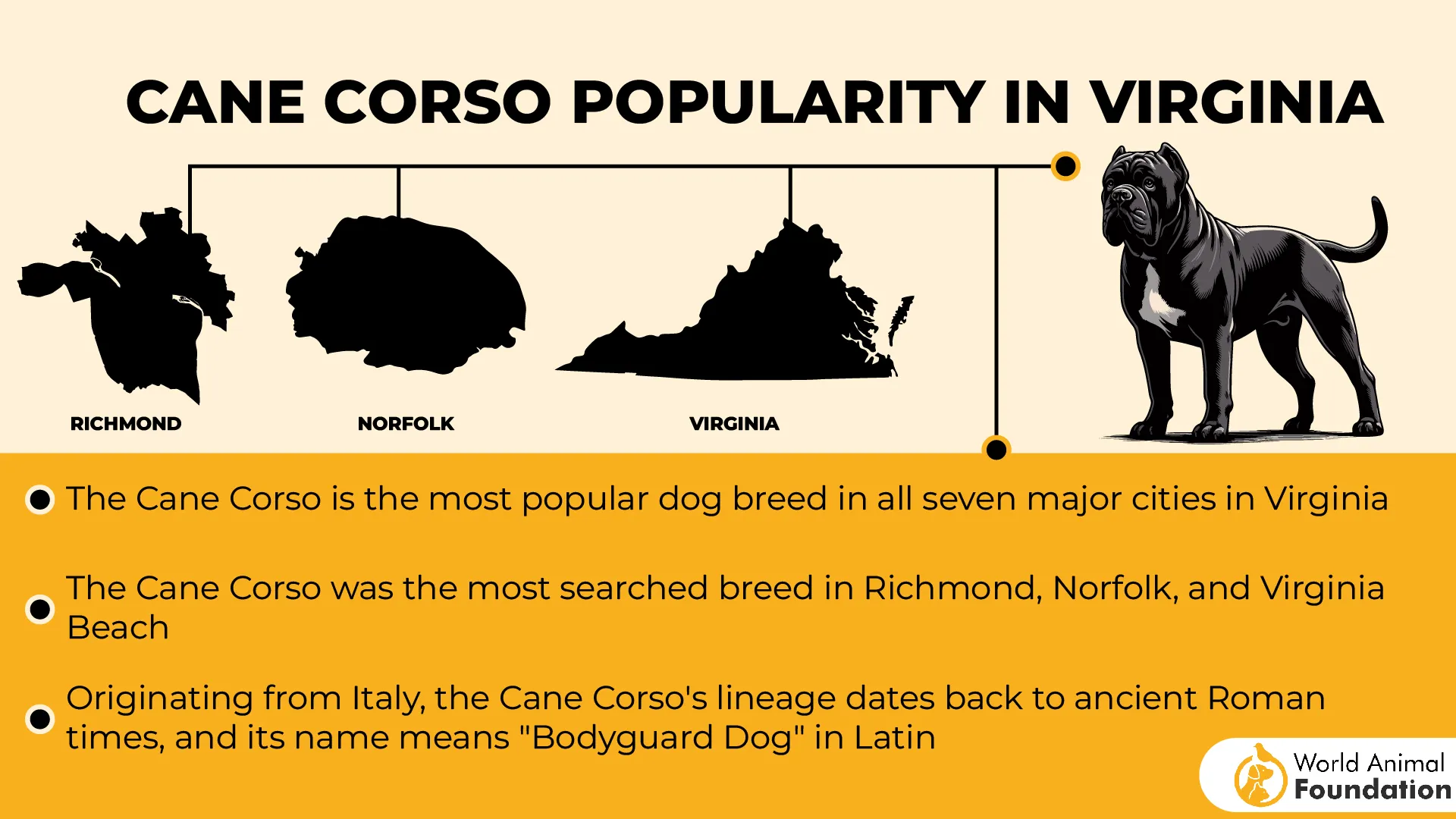
Height: 23.5 to 27.5 inches
Average Weight: 90 to 120 pounds
A little taller and leaner, but still solid muscle wrapped in fur.
Temperament and Personality Traits
Both breeds are loyal and protective, but while the Tosa Inu is all about stoic silence and dignity, the Cane Corso dog brings charisma, warmth, and a little dramatic flair to the family dynamic. Now here’s where things get interesting—and a little heartwarming
Tosa Inu
✅ Think canine Zen master; rarely barks, always observes.
✅ Loyal Guardian – Deeply bonded to their humans, and fiercely protective. According to the American Kennel Club (AKC), this breed is naturally wary of other dogs and may respond aggressively toward those it perceives as intruders.
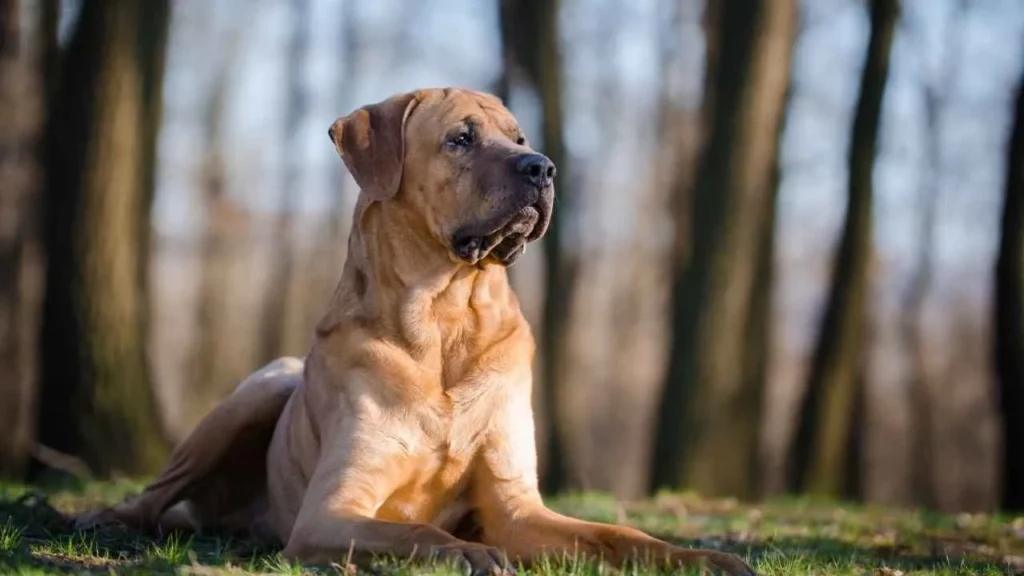
✅ Reserved with Strangers – Takes time to warm up, like a bouncer scanning the guest list.
✅ Steady and Tolerant – Patient with family members, especially if raised with them.
✅ Serious Student – Responds well to training, but you’ve got to earn that respect.
Cane Corso
✅ Affectionate with Family – Loves cuddles, despite being the size of a small sofa.
✅ Protective Instincts – Always on alert, like a security guard with a PhD.
✅ Intelligent and Trainable – Eager to learn, but needs consistent leadership (no pushovers!).
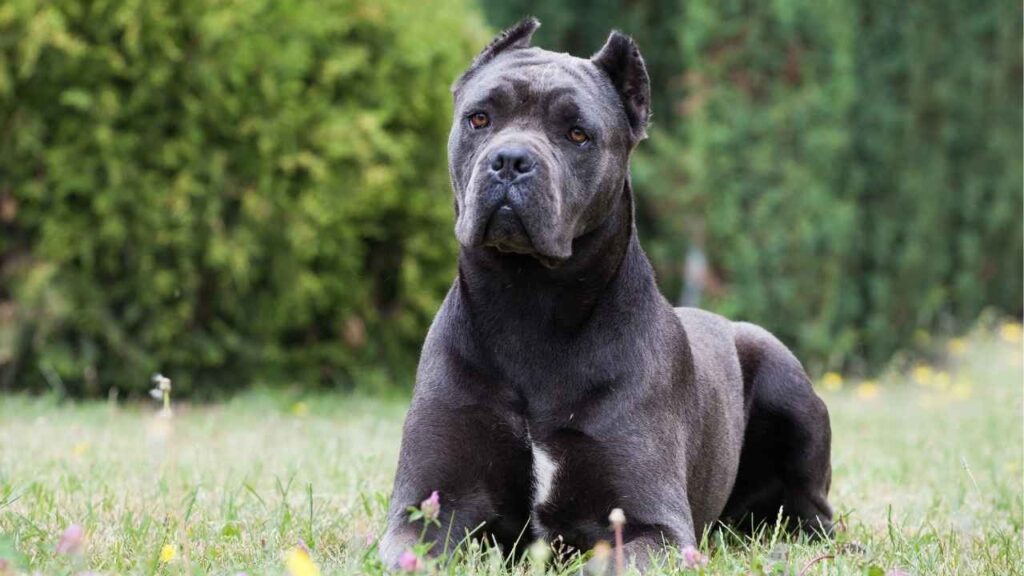
✅ Expressive and Bold – Wears his heart on his sleeve—or, well, on his very expressive face.
✅ Confident and Assertive – Natural leader; socialization is key to keep things balanced.
Trainability and Intelligence
When it comes to trainability and intelligence, both the Tosa Inu and the Cane Corso dogs have the smarts, but they bring very different vibes to the training ring. One is the calm philosopher; the other, the eager bodyguard with a nose for duty and biscuits.
Tosa Inu
Tosa Inus are intelligent but not always eager to please. Expect them to ponder a command as if weighing its cosmic importance before deciding whether it’s worth doing.
They respond to a calm, confident leader rather than a drill-sergeant approach. Think “zen coach” instead of “yelling motivator.”
Their quiet, stoic nature can be puzzling for someone without experience. If you’re new to big breeds, this is like trying to solve a Rubik’s Cube with mittens on.
When you earn their respect, they’ll follow your lead quietly and may even anticipate your needs better than your best friend.
Cane Corso
Cane Corso dogs pick up new commands quickly. Hand them a job—obedience, scent work, carrying a backpack—and they’ll tackle it as if they were born for it.
They genuinely want to please you. Consistent praise or treats will keep them motivated; ignore their accomplishments, and they’ll look at you like you forgot their birthday.
Without proper guidance, their natural confidence can turn into stubbornness. A bored Corso can decide to “redecorate” your living room—usually with something chewable.
Clear rules, predictable expectations, and regular training sessions keep them grounded. Toss out the structure, and they’ll assume you’re just handing them a free rein pass.
Energy Levels and Exercise Needs
Let’s unleash the energy levels and exercise needs of two powerful pups: the Tosa Inu and the Cane Corso breed. These aren’t your average “toss-a-ball-for-an-hour” dogs — they’re majestic, muscular, and full of working dog intensity.
Tosa Inu
The Tosa Inu is Japan’s heavyweight champion — calm, cool, and collected. Unlike what you might expect from such a beefy bruiser, the Tosa is pretty chill indoors. That said, they still need daily activity to stay fit and sane.
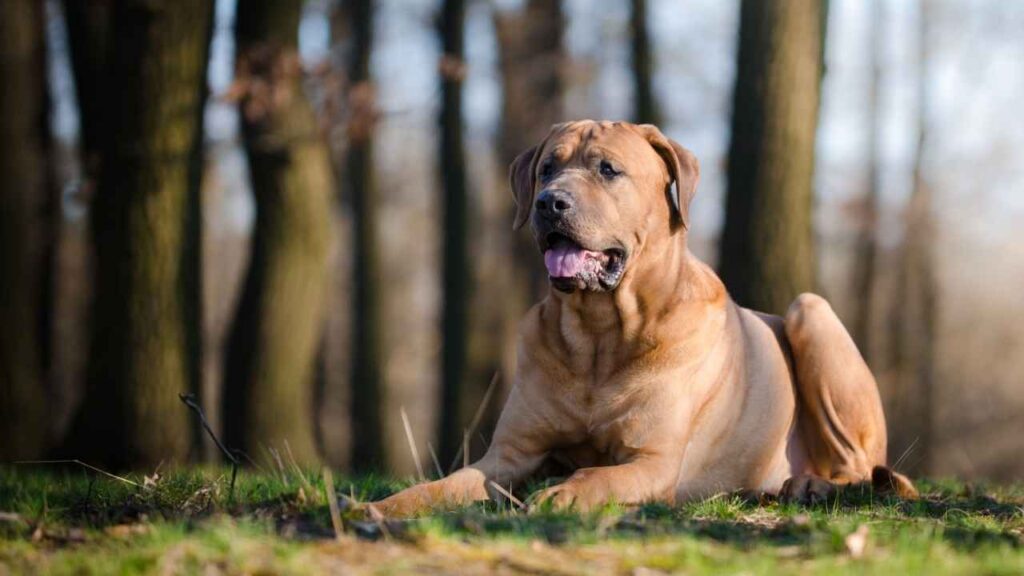
Energy Level: Moderate
These dog breeds need a moderate amount of exercise, such as daily walks and play sessions, to stay both mentally and physically engaged. You won’t find a Tosa doing zoomies in the backyard all day. They’re more into purposeful activity than nonstop play.
Exercise Needs:
30 to 60 minutes daily of structured walks or light jogging
Mental stimulation matters — they like tasks, not fetch marathons
Avoid rough play or intense runs while growing (their joints will thank you)
Cane Corso
Enter the Cane Corso, Italy’s answer to the ultimate guard dog — all muscle and motivation. These dogs are high-energy working dog breeds that thrive on being active and involved. Boredom? Not in their vocabulary. But destruction when bored? Oh yes.
Energy Level: High
Corso energy is the “drag-you-through-the-neighborhood” kind. They’re alert, athletic, and happiest when they have a job to do.
Exercise Needs:
60–90 minutes of daily activity: walks, hikes, training drills, or agility
They do best with a fenced yard or an active owner who can keep up
Mental challenges are essential — think obedience work or protection training
Playfulness and Activity Preferences
Let’s compare the Tosa Inu and Cane Corso dog breeds in terms of playfulness and activity preferences — and spoiler alert: while both are impressive guardians, only one might want to chase a ball.
Tosa Inu
The Tosa Inu isn’t exactly the “fetch 50 times then zoomies” type. He’s more of a calculated wrestler, not a goofy clown. Playfulness? It’s there—just refined, like a stoic warrior enjoying a rare moment of levity.
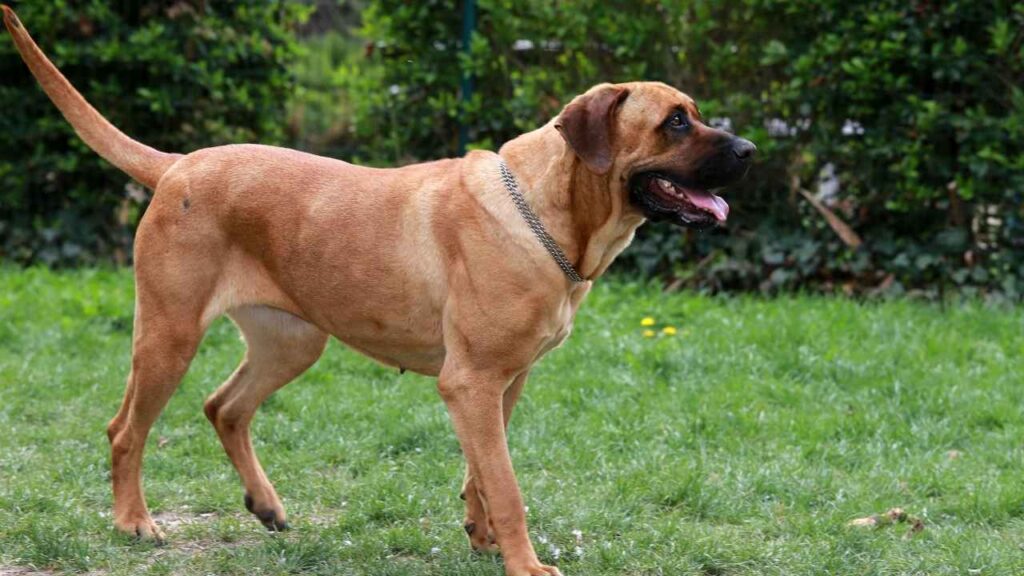
Play Style: Controlled, low-energy. Think “sumo wrestler sparring match,” not “golden retriever on espresso.”
Activity Needs: Moderate. Daily walks, mental stimulation, and some tug-of-war sessions will keep him happy.
Best Games: Tug toys, tracking games, power-walking with dignity. No marathon running—he’s too classy for that.
Vibe: “I’ll play… but only if it’s worth my time and doesn’t mess up my composure.”
Cane Corso
Now the Cane Corso? He’s like your gym bro who lifts hard but still gets the zoomies. Despite their intense appearance, Corsos are surprisingly playful and enjoy bonding through activity.

Play Style: Physical, engaging, confident. Loves playing with family and can be a bit of a clown—if you’re on his VIP list.
Activity Needs: High. Needs structured exercise to keep his mind and muscles from getting bored (or destructive).
Best Games: Agility drills, fetch, obedience games, and scent work. Also loves tasks. Give him a job and he’ll strut like a CEO.
Vibe: “Work hard, play hard—and protect the house in between.”
Dietary Needs and Weight Management
Both breeds are powerhouses—and you better believe they eat like it, too. But that doesn’t mean “bottomless food bowl.” These dogs need carefully managed diets to avoid weight issues and health complications.
Tosa Inu
Tosas require a high-protein, moderate-fat diet to maintain their bulk and muscle tone without tipping into overweight territory.
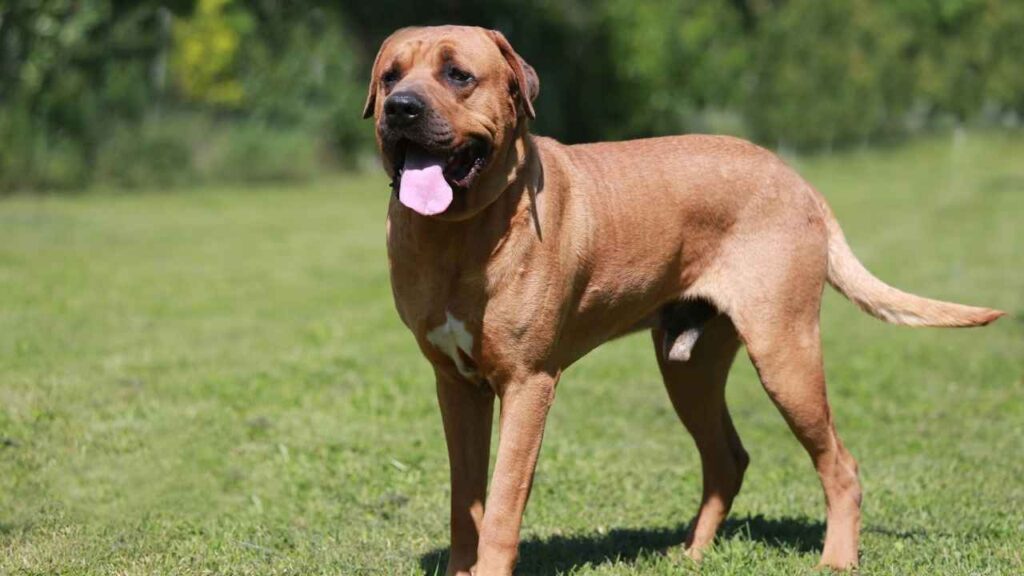
Calories: Moderately active Tosas may need ~2,500–3,000 calories daily.
Ideal Food: High-quality kibble with meat as the first ingredient. Grain-free isn’t a must, but avoid fillers.
Watch Out For: Obesity, bloat (gastric torsion), and joint strain.
Cane Corso
Corsos, being more active, need a muscle-supporting diet with lean protein, healthy fats, and joint-friendly supplements.
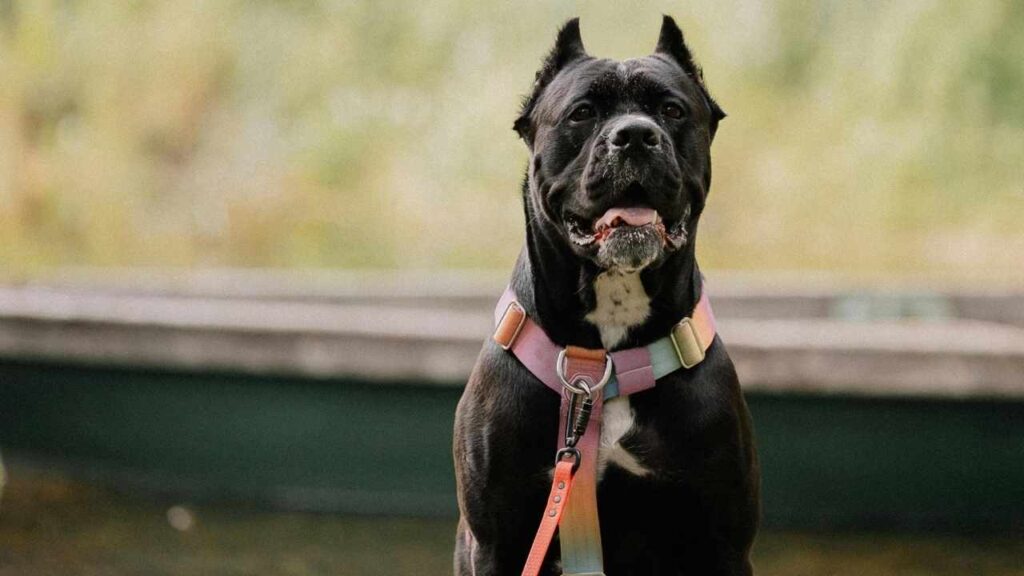
Calories: Active adults may need 2,800–3,500+ calories depending on workload.
Ideal Food: Protein-rich formulas with glucosamine, chondroitin, and omega-3s for joints and coat.
Watch Out For: Overfeeding, calcium imbalances in growing pups, and—you guessed it—bloat.
Health Conditions and Lifespan
These aren’t “forever puppies”—they’re big, bold, and genetically predisposed to a few heavyweight health concerns. Here’s the breakdown:
Tosa Inu
Average Lifespan: 10–12 years with good care
While generally robust and healthy dog breed, the Tosa Ken can be prone to several large-breed-specific issues.

Common Issues:
Hip and elbow dysplasia
Bloat (seriously, it’s a theme)
Skin allergies
Eye problems like entropion
Note: Regular vet visits and joint supplements early on can extend quality of life.
Cane Corso
Lifespan: 9–12 years (longer with responsible breeding and diet control)
Despite their beastly exterior, Corsos can have a few genetic vulnerabilities.
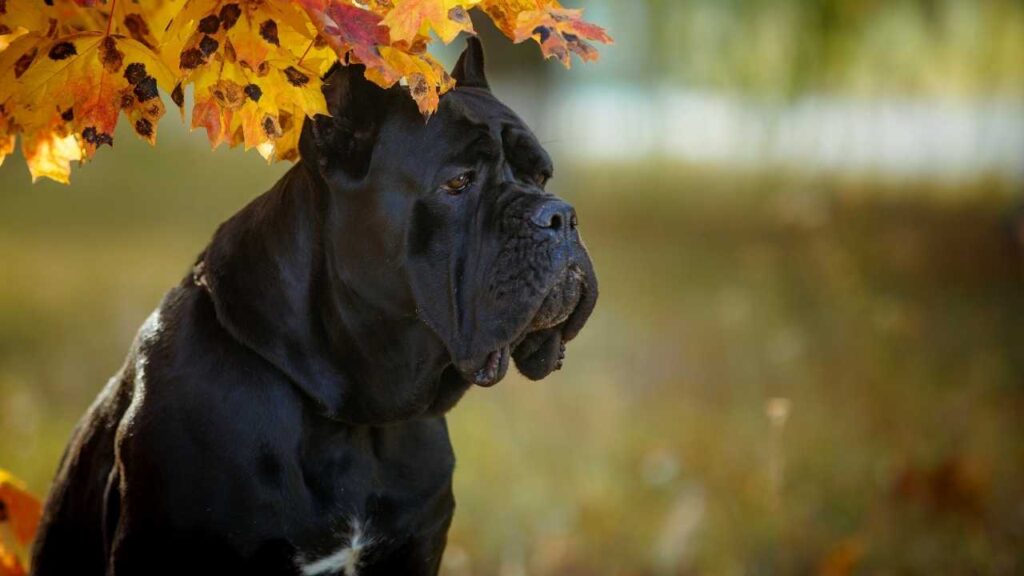
Common Issues:
Hip and elbow dysplasia (again)
Heart conditions (like cardiomyopathy)
Eyelid issues (entropion/ectropion)
Bloat (seriously, it’s like a mastiff club membership perk)
Note: Get Corsos from health-tested lines. A good breeder makes all the difference.
Allergies and Grooming Requirements
Let’s talk allergies and grooming requirements — because while both the Tosa Inu and Cane Corso might look low-maintenance, your lint roller (and sinuses) might say otherwise.
Tosa Inu
Grooming Routine:
Tosa Inus have short, dense coats that are blissfully low-maintenance. A weekly brushing with a rubber curry brush will keep them looking sharp—samurai—sharp.
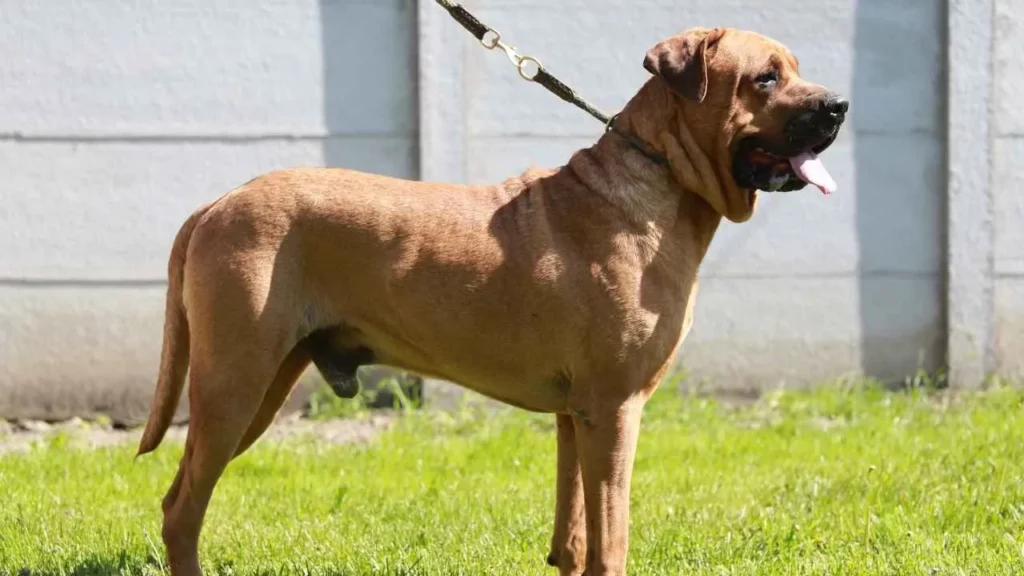
Shedding: Moderate but seasonal
Bathing: Occasional (unless they roll in something suspiciously dead)
They blow their coats a bit more during spring and fall, so have that vacuum ready when the leaves change.
Like all dog breeds, they’ll need regular ear checks and nail trims to avoid turning into clickity-clack monsters on hardwood floors.
Allergy Potential:
Not hypoallergenic. While their short coats help reduce visible fur, they still produce dander — the real culprit in dog allergies.
Cane Corso
Grooming Routine:
Cane Corsos also sport a short double coat, but they tend to shed a bit more visibly, especially during seasonal transitions. Their grooming is still pretty simple but slightly higher-maintenance than the Tosa.
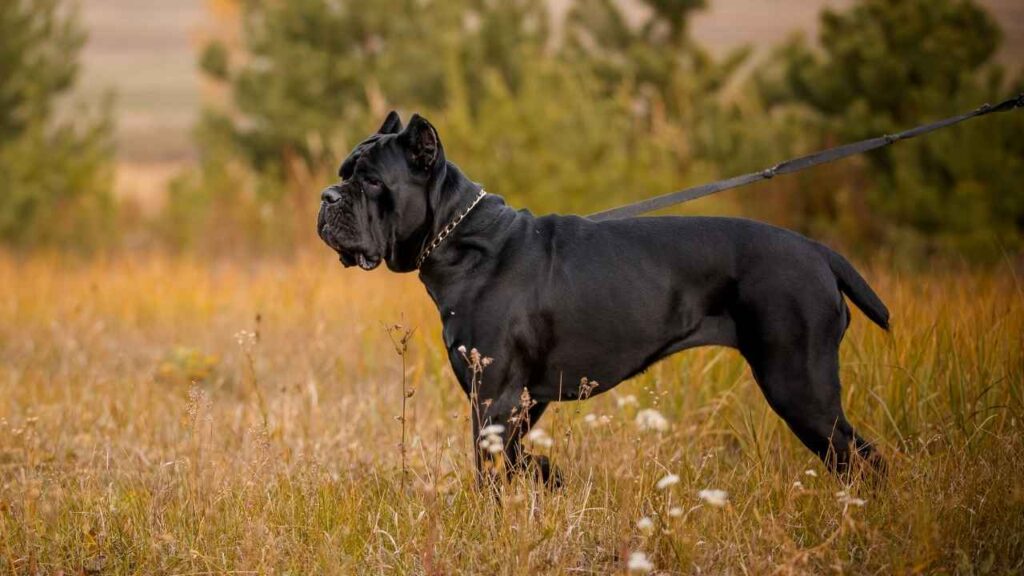
Shedding: Moderate to high during seasonal changes
Brushing: Weekly, though 2x/week during heavy shedding months is ideal
Bathing: Every couple of months or when they smell more “guard dog” than “good boy.”
Allergy Potential:
Again, not hypoallergenic. Cane Corsos produce their fair share of dander and drool, so allergy-prone folks, take note.
Conclusion
When comparing the Tosa Inu vs Cane Corso, both are big dogs known for their courage, strength, and guarding instincts. While the Cane Corso excels at guarding livestock and herding, the Tosa Ken was bred as a better fighter and is often more reserved. Both breeds require proper training and early socialization to coexist peacefully with kids, cats, other pets, and other dogs.
Though slightly smaller than a northwestern wolf or dire wolf, these species stand out among other dog breeds like the German Shepherd for their loyalty and power. They can be aggressive toward strangers and unfamiliar animals, so owners must be careful.
The Tosa’s massive head and serious demeanor contrast with the Cane Corso’s more expressive look, but both make devoted pets with the right house, structure, and leadership. Understanding their unique needs ensures they thrive alongside other breeds and adapt well to family life.


